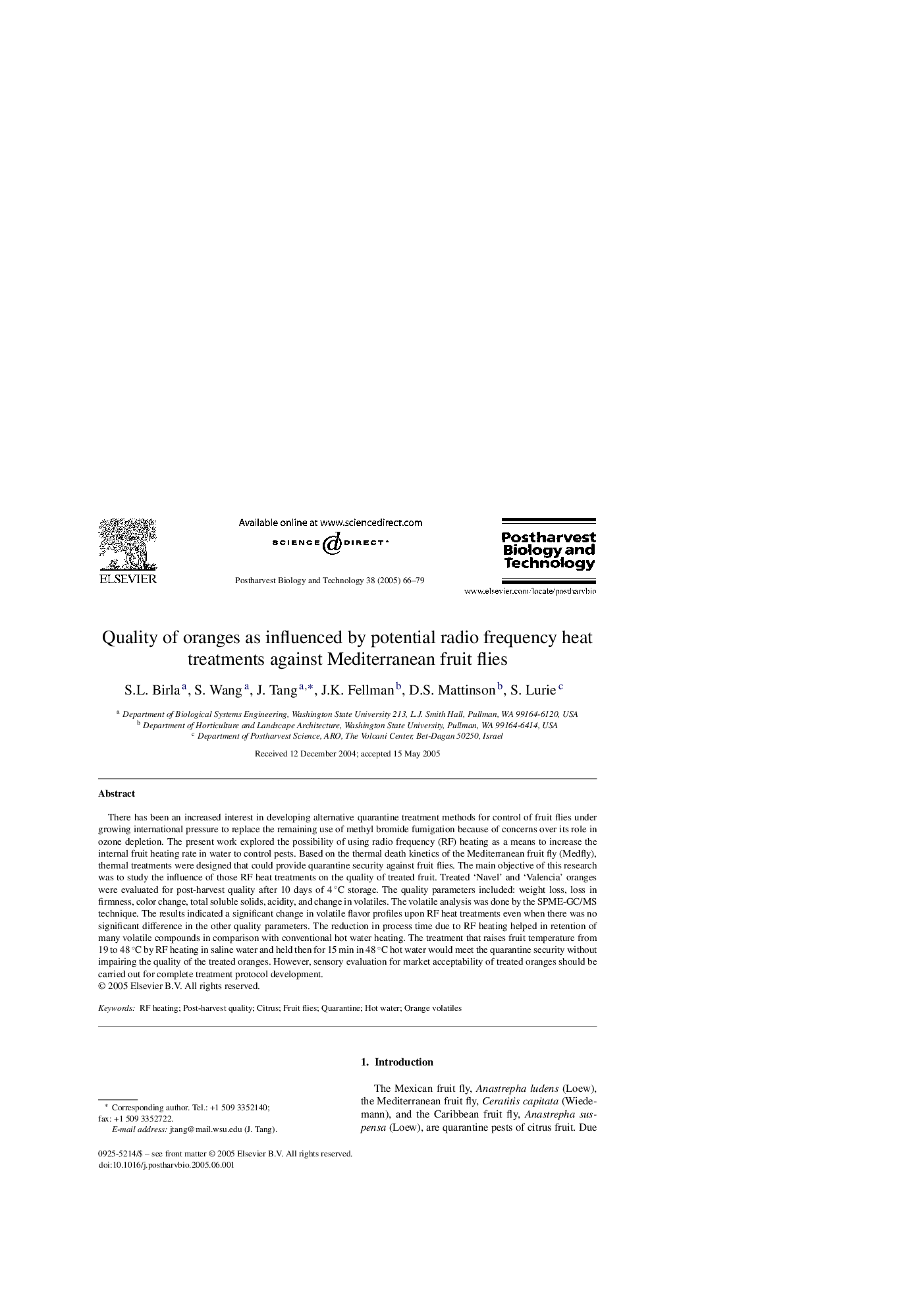| Article ID | Journal | Published Year | Pages | File Type |
|---|---|---|---|---|
| 9475238 | Postharvest Biology and Technology | 2005 | 14 Pages |
Abstract
There has been an increased interest in developing alternative quarantine treatment methods for control of fruit flies under growing international pressure to replace the remaining use of methyl bromide fumigation because of concerns over its role in ozone depletion. The present work explored the possibility of using radio frequency (RF) heating as a means to increase the internal fruit heating rate in water to control pests. Based on the thermal death kinetics of the Mediterranean fruit fly (Medfly), thermal treatments were designed that could provide quarantine security against fruit flies. The main objective of this research was to study the influence of those RF heat treatments on the quality of treated fruit. Treated 'Navel' and 'Valencia' oranges were evaluated for post-harvest quality after 10 days of 4 °C storage. The quality parameters included: weight loss, loss in firmness, color change, total soluble solids, acidity, and change in volatiles. The volatile analysis was done by the SPME-GC/MS technique. The results indicated a significant change in volatile flavor profiles upon RF heat treatments even when there was no significant difference in the other quality parameters. The reduction in process time due to RF heating helped in retention of many volatile compounds in comparison with conventional hot water heating. The treatment that raises fruit temperature from 19 to 48 °C by RF heating in saline water and held then for 15 min in 48 °C hot water would meet the quarantine security without impairing the quality of the treated oranges. However, sensory evaluation for market acceptability of treated oranges should be carried out for complete treatment protocol development.
Related Topics
Life Sciences
Agricultural and Biological Sciences
Agronomy and Crop Science
Authors
S.L. Birla, S. Wang, J. Tang, J.K. Fellman, D.S. Mattinson, S. Lurie,
